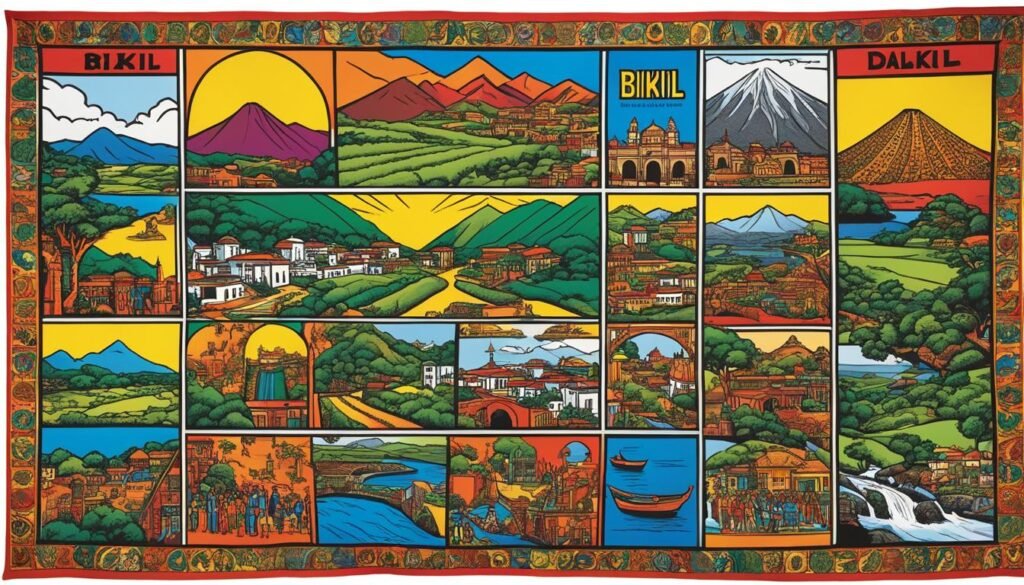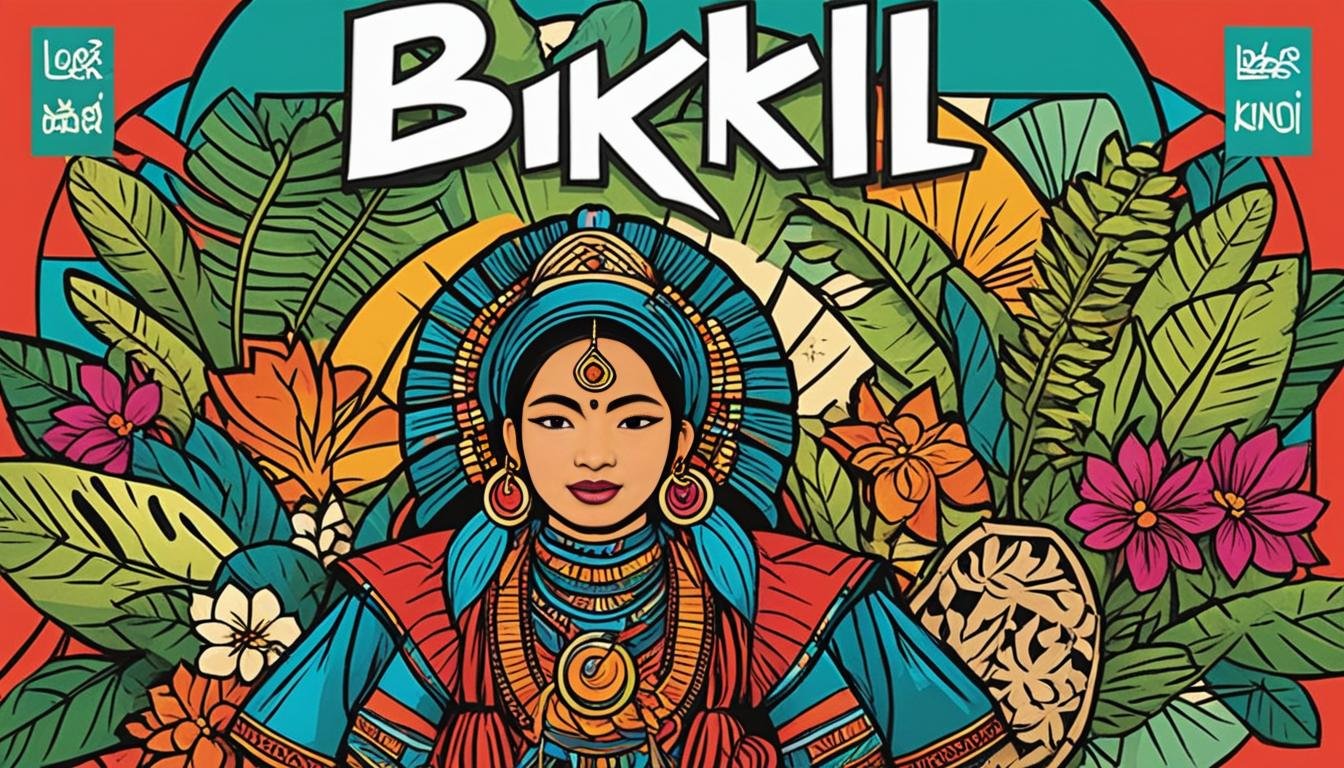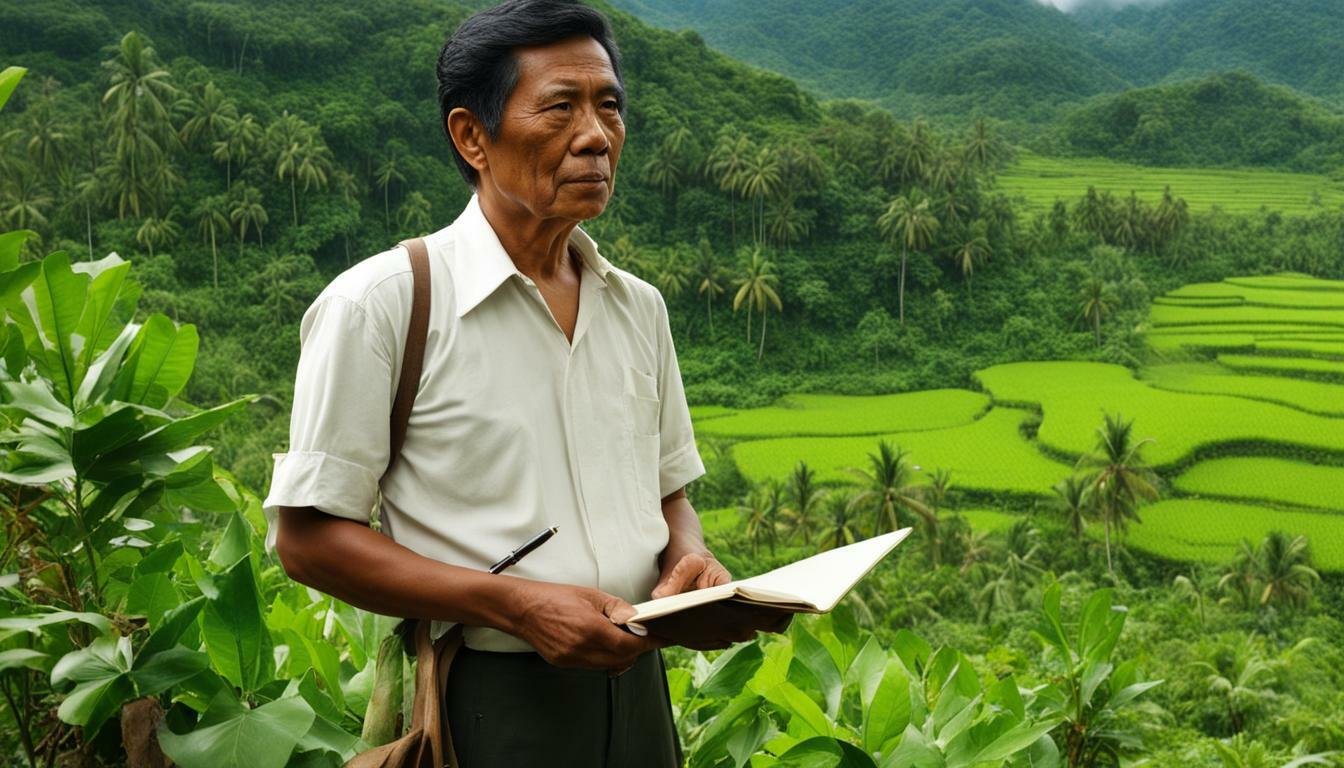Bikol Language
Welcome to our article on the Bikol language, spoken in the Bicol Region of the Philippines. As an Austronesian language, Bikol holds a significant place among the diverse Philippine languages. In this article, we will explore its origins, classification, dialects, cultural significance, linguistic features, and its role in regional identity. We will also provide practical guidance for learning the Bikol language.
So, join us on this linguistic journey as we delve into the rich tapestry of Bikol language and discover its unique cultural heritage.
Key Takeaways:
- The Bikol language is an Austronesian language spoken in the Bicol Region of the Philippines.
- Bikol is part of the diverse Philippine languages family.
- The language has various dialects, including Coastal and Inland Bikol, as well as standardized Central Bikol.
- Bikol language plays a crucial role in the cultural identity of the region and is celebrated in literature and media.
- Learning Bikol can be an enriching experience, and we will provide a guide to basic phrases and grammar.
Understanding the Bikol Language: Origins and Classification
The Bikol language is an integral part of the cultural and linguistic landscape of the Bicol Region in the Philippines. To fully appreciate the richness and significance of this language, it is important to delve into its origins and classification.
Austronesian Roots and Philippine Language Family
The Bikol language belongs to the Austronesian language family, which comprises various languages spoken across Southeast Asia and the Pacific. This family includes languages such as Tagalog, Cebuano, and Malay. Within the Philippine language family, Bikol is specifically classified as a Central Philippine language.
The Austronesian roots of the Bikol language highlight its historical connections and influences from neighboring languages within the region. This linguistic heritage provides valuable insights into the cultural interactions and exchanges that have shaped the Bikol language over time.
The Geographic Spread of Bikol Speakers
The Bikol language is primarily spoken in the Bicol Region, which is located in the southeastern part of Luzon island in the Philippines. This region is composed of six provinces: Albay, Camarines Norte, Camarines Sur, Catanduanes, Masbate, and Sorsogon.
While the Bicol Region is the main hub of Bikol speakers, communities of Bikol speakers can also be found in other parts of the Philippines, particularly in urban areas where migration and diaspora have occurred. The geographic spread of Bikol speakers reflects the language’s ability to adapt and thrive in different environments.
Proto-Bikol: The Ancestry of Bikol Languages
Proto-Bikol is the ancestral language from which the modern Bikol languages have evolved. It serves as a linguistic precursor, linking the diverse Bikol dialects and providing insights into their shared linguistic features.
Studying Proto-Bikol allows linguists and researchers to trace the trajectory of the Bikol language’s development and understand the factors that have contributed to the variations observed in different Bikol dialects.
By exploring the origins and classification of the Bikol language, we gain a deeper understanding of its significance and unique characteristics. This knowledge forms the foundation for further exploration into the dialects, cultural significance, and preservation of the Bikol language.
The Rich Tapestry of Bikol Dialects
The Bikol language, spoken in the Bicol Region of the Philippines, encompasses a diverse range of dialects that contribute to the richness of this linguistic tapestry. These dialects exhibit unique characteristics, variations, and phonological traits, making the Bikol language landscape truly fascinating.
Coastal Versus Inland Bikol Variants
One notable distinction within the Bikol language is the division between Coastal Bikol and Inland Bikol variants. Coastal Bikol, also known as Bikol Naga or Legazpi Bikol, is predominantly spoken along the coastal areas of the Bicol Peninsula. Inland Bikol, on the other hand, encompasses dialects spoken further inland, such as Bikol Rinconada and Bikol Agta.
While Coastal Bikol and Inland Bikol share many similarities, they also have distinct vocabulary, pronunciation, and grammatical differences that reflect the influence of their respective geographical environments and historical interactions with neighboring communities.
Standardized Central Bikol and Its Regional Dialects
Central Bikol, also known as Bikol Central or Bicolano, serves as the standardized form of the Bikol language. It is widely used in official communication, literature, education, and media in the Bicol Region. However, even within Central Bikol, there are regional variations that demonstrate flexibility and adaptation to local contexts.
These regional dialects, including Bikol Naga, Bikol Rinconada, and Bikol Agta, exhibit specific linguistic peculiarities that distinguish one from another. While they share a common core, the regional dialects offer insights into the cultural diversity and unique linguistic heritage of the Bicol Region.
Unique Phonological Traits Amongst Bikol Dialects
One fascinating aspect of Bikol dialects is the presence of unique phonological traits that set them apart from other Philippine languages. These traits include vowel and consonant changes, pitch variations, and unique stress patterns, adding depth and complexity to the pronunciation of words.
For example, the Bikol Naga dialect is characterized by its unique tonality, where the rise and fall of pitch play a significant role in conveying meaning. In contrast, the Bikol Rinconada dialect is known for its distinct stress patterns, emphasizing different syllables compared to other dialects.
These phonological traits not only contribute to the distinct identity of each Bikol dialect but also exemplify the intricate web of linguistic diversity within the Bikol language family.

| Dialect | Location |
|---|---|
| Coastal Bikol | Coastal areas of the Bicol Peninsula |
| Inland Bikol | Further inland areas of the Bicol Region |
| Bikol Naga | Naga City and surrounding areas |
| Bikol Rinconada | Iriga City and Rinconada area |
| Bikol Agta | Mount Isarog and Agta communities |
Bikol Language’s Cultural Significance in Literature and Media
This section explores the cultural significance of the Bikol language in literature and media. Bikol literature plays a vital role in preserving and promoting the language, showcasing the rich linguistic and cultural heritage of the Bicol Region. One notable contribution is the historical work known as Vocabulario de la lengua Bicol, which holds immense value for understanding the Bikol language’s lexical and semantic evolution.
Vocabulario de la lengua Bicol is a comprehensive dictionary that documents the vocabulary of the Bikol language. It serves as a valuable resource for linguists, researchers, and language enthusiasts, providing insights into the linguistic nuances and evolution of Bikol.
Contemporary media also plays a significant role in the preservation of the Bikol language. Through various platforms, such as radio, television, and online media, Bikol-language programs, music, and films are not only entertaining but also serve as powerful tools for language revitalization and promotion. These media initiatives support the ongoing efforts to engage younger generations and instill a sense of pride in their linguistic and cultural heritage.
https://www.youtube.com/watch?v=WhWx2XIEIyw
Learning Bikol: A Guide to Basic Phrases and Grammar
For those interested in learning the Bikol language, this section provides a comprehensive guide to mastering basic phrases and understanding the fundamental aspects of Bikol grammar. By familiarizing yourself with these essential elements, you’ll be able to communicate effectively and engage with the rich linguistic heritage of the Bicol Region.
Common Phrases for Everyday Use in Bikol
Mastering common phrases is a great starting point for learning any language, and Bikol is no exception. Here are some practical examples of everyday phrases in Bikol:
- Magayon na agang! – Good morning!
- Maray na udto! – Good afternoon!
- Maayong gab-i! – Good evening!
- Pwersa tabi! – Please!
- Salamat po! – Thank you!
- Dios mabalos! – God bless you!
- Pwede po makaagi? – May I pass by?
- Tagay, tukar ta! – Cheers, let’s drink!
- Arog kang si Dan? – Are you like Dan?
- Mayong saindang dai? – Is there anything you don’t like?
Key Structural Differences in Bikol Grammar
Bikol grammar has distinct features that set it apart from other languages. Understanding these structural differences is vital for proper communication. Here are some key aspects to note:
- Pronouns: Bikol employs pronouns to indicate the subject, object, and possession. Pronouns in Bikol have different forms depending on the context and grammatical role.
- Verbal Affixes: Bikol verbs undergo changes through affixation, indicating tense, aspect, mood, and other grammatical nuances. Learning these affixes is essential for conjugating verbs correctly.
- Noun Classification: Bikol categorizes nouns into different classes, which affects how adjectives and determiners are used with them. Familiarize yourself with noun classification to form grammatically correct sentences.
- Word Order: Bikol typically follows a subject-verb-object (SVO) word order. However, it is flexible and can be adjusted for emphasis or stylistic reasons.
- Reduplication: Reduplication is a prevalent feature in Bikol, where words or parts of words are repeated to indicate plurality, intensity, or other semantic functions.

Bikol Language
The Bikol language holds significant cultural and linguistic importance in the Bicol Region of the Philippines. With its rich vocabulary and distinct dialects, Bikol serves as a vital part of the region’s identity. The language is widely spoken and celebrated, reflecting the unique heritage and traditions of the Bicolanos.
As an Austronesian language, Bikol is part of the larger family of Philippine languages. It shares linguistic characteristics with other languages in the region, while also exhibiting its own distinct features. The geographic spread of Bikol speakers across the Bicol Region further contributes to the language’s diversity and cultural significance.
Throughout history, the Bikol language has played a crucial role in literature, media, and the arts. Notable works such as Vocabulario de la lengua Bicol have preserved the language and showcased its historical value. In contemporary times, media platforms have prioritized the promotion and preservation of the Bikol language, ensuring its continuity for future generations.
Preserving and promoting the Bikol language is vital to maintaining the unique cultural identity of the Bicol Region. Efforts in language education and advocacy have been instrumental in ensuring the language’s survival. Additionally, the integration of Bikol in technology and social media platforms has expanded its reach and accessibility.
The Bikol language’s significance extends beyond its linguistic value. It fosters a sense of community among Bicolanos, connecting them through a shared heritage and identity. The language is also intricately woven into regional events and celebrations, further cementing its importance in Bicol culture.
In conclusion, the Bikol language stands as a testament to the rich linguistic and cultural heritage of the Bicol Region. Its diversity, significance, and contributions to literature, media, and regional identity make it an essential component of Bicolano culture.
Unique Linguistic Features of Bikol Language
The Bikol language has several unique linguistic features that distinguish it from other languages. One significant influence on the Bikol vocabulary is Spanish. Due to centuries of Spanish colonial rule in the Philippines, many Spanish words were integrated into the Bikol language, creating a rich blend of vocabulary. These loanwords and cognates reflect the historical connection between the Spanish and Bikol cultures.
Additionally, the Bikol orthography, or writing system, bears similarities to the Spanish writing system. The use of the Latin alphabet, which was introduced by Spanish colonizers, is prevalent in writing the Bikol language. This connection to the Spanish writing system has influenced the way Bikol is written and spelled.

The Influence of Spanish on Bikol Vocabulary
The Spanish influence on the Bikol language is evident in its vocabulary. Numerous Spanish loanwords and cognates have become an integral part of the Bikol lexicon. These borrowed words contribute to the richness and diversity of the language, showcasing the historical and cultural ties between the Bikol-speaking regions and Spain.
For example, the Spanish word “pan” meaning bread is also used in the Bikol language. Similarly, the Spanish word “mesa” meaning table is recognizable in Bikol as “mesa” as well. These loanwords from Spanish demonstrate the impact of colonial history on language development.
Bikol Orthography and Its Connection to Spanish
The Bikol orthography, influenced by Spanish, utilizes the Latin alphabet with some additional characters and diacritical marks to represent specific sounds. This orthographic system allows for effective written communication in Bikol and facilitates the preservation and distribution of the language through various mediums, including literature, media, and technology.
The connection to the Spanish writing system is evident in the use of diacritical marks in Bikol, similar to those used in Spanish for pronunciation. For example, the letter “ñ” is employed in Bikol to represent the “ny” sound, which is reminiscent of the Spanish “ñ” in words such as “caña” (sugar cane). This shared orthographic convention reflects the historical association between Spanish and Bikol.
The unique linguistic features of the Bikol language, including its Spanish-influenced vocabulary and orthography, contribute to its distinct character and highlight its cultural heritage. These linguistic elements showcase the complex interplay between languages and cultures, preserving the historical connections between the Philippines and Spain while providing a testament to the richness and diversity of the Bikol language.
The Role of Bikol Language in Regional Identity
The Bikol language plays a vital role in shaping the regional identity of the Bicol Region. It serves as a powerful tool in fostering a sense of community and unity among Bikolano speakers, contributing to the preservation and celebration of Bikol culture.
Fostering a Sense of Community Through Language
The Bikol language creates a strong sense of belonging and community among its speakers. Through language, Bikolanos are able to connect, communicate, and share their experiences, stories, and traditions. It serves as a means of expressing collective experiences, values, and aspirations, reinforcing a shared identity that transcends geographical boundaries.
Regional Events and Celebrations of Bikol Culture
Throughout the Bicol Region, various regional events and celebrations showcase the cultural significance of the Bikol language. These events provide platforms for the vibrant expression of Bikol culture through music, dance, literature, and art. Festivals like the Penafrancia Festival in Naga City and the Ibalong Festival in Legazpi City prominently feature the Bikol language, highlighting its integral role in the region’s cultural heritage.
Techniques for Preserving and Promoting Bikol Language
The Bikol language holds immense cultural and linguistic importance in the Bicol Region of the Philippines. To ensure its preservation and promote its usage among the community, various techniques and initiatives have been implemented.
Language Education Initiatives in Bicol Region
Recognizing the significance of language education in preserving Bikol, educational institutions in the Bicol Region have incorporated Bikol language courses into their curriculum. These initiatives aim to equip students with the necessary language skills and knowledge to engage with their cultural heritage. By providing formal education in Bikol language, these efforts strive to ensure its continuity and prevalence among future generations.
Advocacy for the Use of Bikol in Technology and Social Media
The digital era has opened new avenues for language promotion, and the Bikol language community has embraced technology and social media platforms as powerful tools for advocacy. Online communities and social media pages dedicated to Bikol language have flourished, creating spaces for language enthusiasts to connect, practice, and share resources. Additionally, the development of language learning apps and online resources in Bikol has further promoted language visibility and accessibility.
“Embracing technology is crucial in preserving and promoting the Bikol language. By harnessing the power of social media platforms and digital tools, we can reach a wider audience and instill a sense of pride and appreciation for our language and culture.”
– Maria Cruz, Bikol Language Advocate
The use of technology and social media not only enhances language education but also encourages its usage in everyday life. From hashtags and language challenges to online language exchange programs, these platforms provide opportunities for individuals to interact and engage with the Bikol language, fostering a vibrant and active community.
By employing language education initiatives and harnessing the potential of technology and social media, the Bikol language community continues to preserve and promote the language, securing its place in the digital age.
Comparative Analysis: Bikol Language Versus Other Philippine Languages
In order to gain a deeper understanding of the Bikol language, it is important to examine its similarities and differences with other Philippine languages. This comparative analysis sheds light on the linguistic connections between Bikol and its counterparts, particularly within the Central Philippine language family.
Examining Lexical Similarities and Differences
When comparing the Bikol language to other Philippine languages, one can observe both lexical similarities and differences. While there may be shared vocabulary and cognates, Bikol also possesses distinct words and expressions that set it apart. This comparative analysis allows us to explore the diverse lexical landscape of the Bikol language and gain insights into its unique linguistic features.
Bikol and Its Relation to Other Central Philippine Languages
Within the broader context of Philippine languages, Bikol is classified as part of the Central Philippine language family. This linguistic connection highlights the historical and cultural ties that exist between Bikol and other languages in the region. By examining the relationships and influences at play, we can develop a comprehensive understanding of the Bikol language’s place within the Philippine linguistic landscape.
Conclusion
In conclusion, the Bikol language holds immense significance in the Bicol Region of the Philippines. As an Austronesian language and part of the Philippine language family, Bikol showcases a rich linguistic heritage that is deeply rooted in the region’s cultural identity.
Throughout this article, we have explored the origins and classification of the Bikol language, highlighting its geographic spread and the ancestral language, Proto-Bikol. We have also delved into the diverse tapestry of Bikol dialects, from Coastal to Inland variants, including the standardized Central Bikol and its regional variations.
Beyond its linguistic features, the Bikol language plays a vital role in literature, media, and regional identity. Works like Vocabulario de la lengua Bicol and contemporary media platforms contribute to the preservation and promotion of the language. Furthermore, the Bikol language fosters a sense of community and is celebrated through regional events and cultural gatherings.
Efforts to preserve and promote the Bikol language include language education initiatives and advocacy for its use in technology and social media platforms. Understanding the unique linguistic features of Bikol, influenced by Spanish and reflected in its orthography, is crucial in preserving the language for future generations.
Overall, the Bikol language is a valuable part of the Bicol Region’s cultural landscape. By exploring its origins, dialects, cultural significance, and preservation techniques, we gain a deeper appreciation for this vibrant language and its role in shaping the region’s identity.
FAQ
What is the significance of the Bikol language in the Bicol Region?
The Bikol language holds significant cultural and linguistic importance in the Bicol Region of the Philippines. It is widely spoken by the local population and serves as a means of fostering regional identity.
Is the Bikol language classified as an Austronesian language?
Yes, the Bikol language belongs to the Austronesian language family, which is one of the largest language families in the world. This classification aligns it with other languages spoken in the Philippines and various parts of Southeast Asia and the Pacific.
What are the different dialects of the Bikol language?
The Bikol language comprises various dialects, including Coastal Bikol, Inland Bikol, and standardized Central Bikol. Each dialect has its own unique characteristics and regional variations.
How can I learn the Bikol language?
To learn the Bikol language, you can start by familiarizing yourself with common phrases and grammar. There are language education initiatives in the Bicol Region and resources available online that can guide you in your learning journey.
What is the influence of Spanish on the Bikol language?
The Bikol language has been influenced by Spanish, especially in its vocabulary. There are many loanwords and cognates in Bikol that have been derived from Spanish. Additionally, the Bikol orthography has connections to the Spanish writing system.
How does the Bikol language contribute to regional identity?
The Bikol language plays a crucial role in shaping regional identity in the Bicol Region. It fosters a sense of community among Bikol speakers and helps preserve the unique culture and heritage of the region. The language is celebrated during regional events and celebrations.
What efforts are being made to preserve and promote the Bikol language?
Various language education initiatives are being undertaken in the Bicol Region to preserve and promote the Bikol language. There is also advocacy for the use of Bikol in technology and social media platforms to ensure its relevance in the modern digital age.
How is the Bikol language related to other Philippine languages?
The Bikol language is part of the Central Philippine language family, which includes other languages spoken in the central part of the Philippines. It shares lexical similarities with some of these languages and is connected through linguistic ties.


























